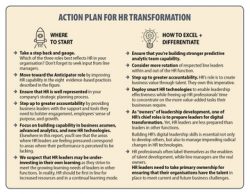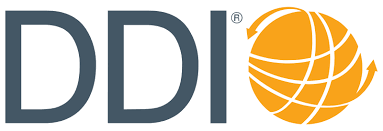Infographic: HR transformation in the spotlight

The role of the Chief HR Officer continues to evolve, but not every organisation or HR team in Asia-Pacific is keeping up with the change required. That’s’ just one of the many key insights garnered from the Global Leadership Forecast 2018 study, by DDI in collaboration with The Conference Board and EY. In all, the research provides 25 data-driven insights for business people and organisational managers across functions and markets in what is effectively a new world order for international business.
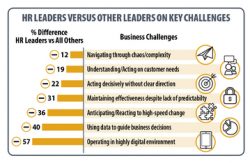 But it is the insights into HR leadership that are having particular resonance in this part of the world. The Southeast Asia section of the study interviewed 534 local HR professionals as part of a function-specific survey. One of its key focuses was how HR leaders were dealing with the disruptive and technology-driven business environment of 2018 and 2019.
But it is the insights into HR leadership that are having particular resonance in this part of the world. The Southeast Asia section of the study interviewed 534 local HR professionals as part of a function-specific survey. One of its key focuses was how HR leaders were dealing with the disruptive and technology-driven business environment of 2018 and 2019.
New career paths, evolving organisational structures and business models, and digital disruption are all impacting the way HR leaders are working with their organisations. And it is up to those Chief HR Officers to ensure their voice is heard and they are able to – in turn – impact their organisations and leadership.
A new role for HR
This equates to a new category of skills and tasks for many HR leaders in Southeast Asia, something the researchers have named the “anticipator” tasks. Where once the HR function was a purely “reactor” role, and later it became a much vaunted “partner” to the business, today there is a need for HR leaders to be proactive anticipators of workforce challenges and opportunities. This could be about linking talent planning to strategic planning, boosting predictive analytics efforts, or investing more time and resources into wider reaching global mobility programmes, for example.
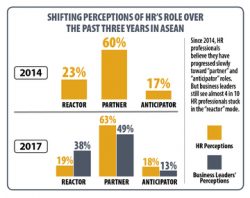 HR leaders will typically need to perform tasks associated with each of the “anticipator”, “partner”, and “reactor” categories, but there is a pressing need to focus on these new pro-active tasks that will help to build organisational resilience in the disruptive business environment.
HR leaders will typically need to perform tasks associated with each of the “anticipator”, “partner”, and “reactor” categories, but there is a pressing need to focus on these new pro-active tasks that will help to build organisational resilience in the disruptive business environment.
Fewer than one in five Southeast Asia professionals already consider themselves “anticipators”. But the statistics are worse when it comes to how non-HR business leaders see their own HR leaders. They are 2.1 times more likely to consider their HR counterparts as less-advanced or influential “reactors”, rather than “anticipators”.
The issue is also apparent in global terms. All of the business leaders involved in the survey were asked about a number of generic business challenges, such as navigating through complexity, or acting decisively without clear direction, and how confident they felt in tackling them. In every case, HR leaders felt less prepared than their peers in other leadership roles.
The study authors highlighted this as particularly concerning. “The work world is experiencing considerable upheaval, yet only one in five HR leaders, on average, felt very prepared to handle the challenges.” To drive change, HR leaders must find the space to develop their understanding and use of people analytics specifically.
The data-driven evolution for HR
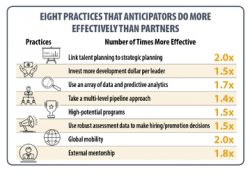 So what do HR leaders need to do to make progress? The Global Leadership Forecast reveals the key practices that define the difference between HR “partners” and “anticipators”. These include the need to make stronger links between HR planning and overall strategy across the business, and the need for effective data analytics to build cases. ”Throughout Global Leadership Forecast 2018, we’ve highlighted the importance of predictive analytics, which are the Anticipator’s lifeblood,” the authors noted. “Analytics are essential to maximising your investments toward improving leadership quality and supply.”
So what do HR leaders need to do to make progress? The Global Leadership Forecast reveals the key practices that define the difference between HR “partners” and “anticipators”. These include the need to make stronger links between HR planning and overall strategy across the business, and the need for effective data analytics to build cases. ”Throughout Global Leadership Forecast 2018, we’ve highlighted the importance of predictive analytics, which are the Anticipator’s lifeblood,” the authors noted. “Analytics are essential to maximising your investments toward improving leadership quality and supply.”
The result of such efforts will propel HR leaders into a new era of importance and strategic effectiveness. With highly-applicable knowledge on how to harness employee data for business advancement, they will find themselves in a strategic position to start looking at leadership capabilities and the most impactful drivers for success.
| The full, 62-page Global Leadership Forecast 2018, with 25 insights across all facets of global business today, is available for HRM Asia readers to download.
Simply follow this link for your free copy. |

